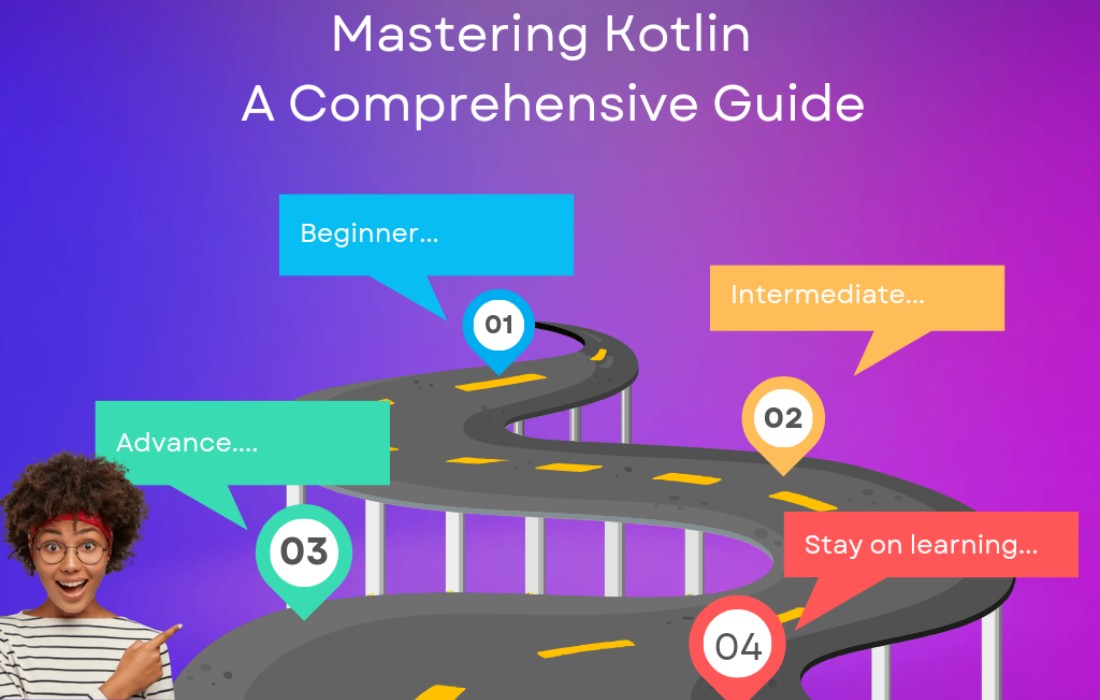Introduction
Understanding control flow is fundamental to programming. It allows us to make decisions and repeat actions based on specific conditions. Kotlin, like many other programming languages, provides control structures such as if, when, and while for branching and looping. However, Kotlin offers some unique features that set it apart from other languages like Java, JavaScript, or Ruby.
In this blog, we’ll explore Kotlin’s if, when, and while constructs, how they compare to other languages, and the specific features Kotlin brings to the table.
The if Statement in Kotlin
The if statement is ubiquitous in most programming languages, including Kotlin. It allows you to conditionally execute a block of code based on whether a given condition is true or false.
Basic Syntax
The basic structure of an if statement in Kotlin is quite similar to other languages like Java or JavaScript:
Single-Line if
For simple conditionals, you can skip the braces and write the statement on a single line:
Using else if
Just like Java, Kotlin supports else if to handle multiple conditions:
if as an Expression
Kotlin’s if is more powerful than just a control flow statement. It is an expression, meaning it can return a value:
This is equivalent to using a ternary operator in languages like Java, but Kotlin doesn’t have the ? : ternary operator. Instead, if serves the same purpose.
The when Statement in Kotlin
The when statement in Kotlin is an enhanced version of the traditional switch statement found in languages like Java or JavaScript. It’s a versatile and powerful tool for conditional branching.
Basic Syntax
The most straightforward usage of when compares a value against different cases, much like a switch statement:
Working with Any Type
Unlike traditional switch statements, Kotlin’s when can compare values of any type. For instance, it can handle strings, integers, and more:
Using when Without an Expression
You can skip the parameter in when and use Boolean expressions as conditions. This turns when into a cleaner version of if/else if:
Ranges and Collections in when
Kotlin allows you to use ranges and collections within when to match values:
Multiple Branches with Comma Delimiters
Kotlin allows you to match multiple values in a single branch by separating them with commas:
The while Loop in Kotlin
The while loop is a standard looping construct found in most programming languages. Kotlin’s syntax for while is similar to Java, JavaScript, and Ruby:
Though not as commonly used in Kotlin as other loops like forEach(), the while loop remains an essential tool for repetitive tasks based on a condition.
Advanced Concepts: Expressions, Exhaustiveness, and Control Flow
Expressions in if and when
Kotlin’s if and when are expressions, meaning they can return values. This makes them more versatile than their counterparts in other languages:
Exhaustiveness in if and when
When using if or when as expressions, they must be exhaustive. This means every possible input must be covered by a branch, otherwise you will get a compiler error:
Here, the compiler throws an error because the when is not exhaustive and doesn’t cover all possible values.
Breaking Out of Loops
Sometimes you’ll want to change the normal flow of a loop. Kotlin provides two useful statements for this: break and continue.
Using break
The break statement exits the loop immediately:
Using continue
The continue statement skips the current iteration of the loop and continues with the next one:
Conclusion
Kotlin’s if, when, and while structures provide a robust set of tools for controlling the flow of your programs. By understanding these constructs, you’ll be able to write cleaner, more efficient Kotlin code. Kotlin’s unique features, like treating if and when as expressions, allow for concise and powerful control flow management. Keep experimenting with these features to unlock the full potential of Kotlin!
Happy coding!












